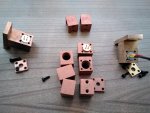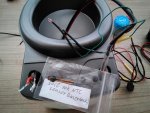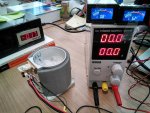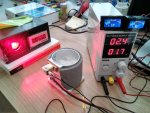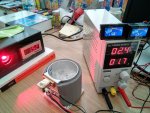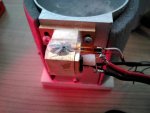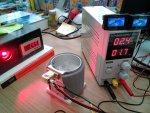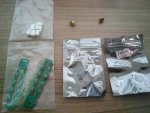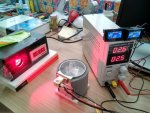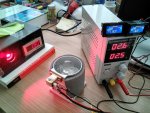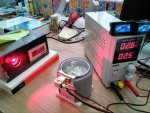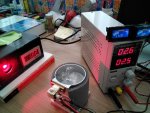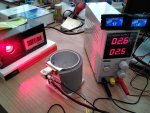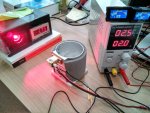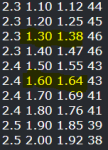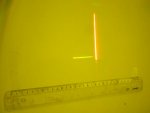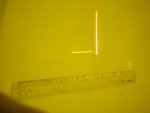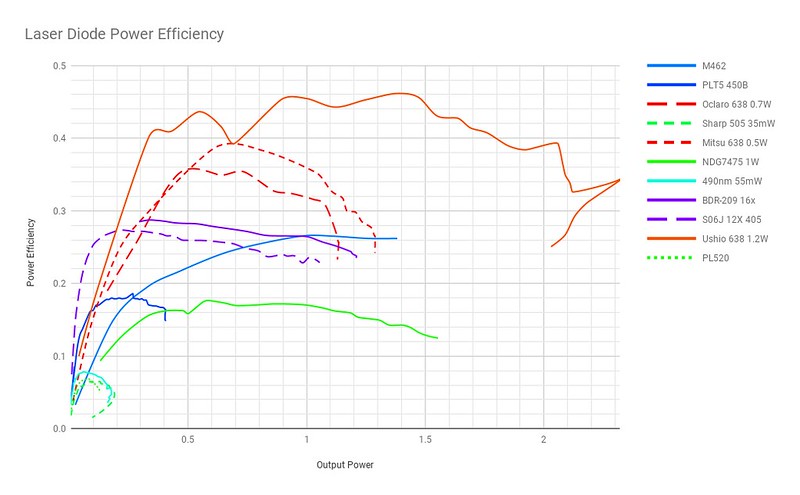Yes, Bob, deadshadow has reached almost 1.5W peak from TEC-cooled P73 here but its LD might have been at 0ºC for that moment?
https://laserpointerforums.com/f50/my-handheld-tec-cooled-ml501p73-almost-finished-101861.html
We know that P73 has less divergence than Ushio but its low price makes it easy to replace only in single LD builds. However, when I wanted to replace one LD in a big combined setup, then it took a lot of work readjusting the mount, mirrors etc. You know...
The question is which of these 2 LDs is more robust to produce these 1.5W when cooled let's say to 10-15º and not under 0º?
And to finish the study wih Ushio I checked its divergence with G-2 compared to NUBM44 at 5m - as expected it is almost 2x higher but only from WL 40% higher it should have 40% more divergence even at same emitter size I suppose. Sorry for lines not being parallel but this is how LDs are installed in my builds, I was to lazy to rotate...and how can I rotate the ice bath keeping ice inside???
On pics NUBM44 was set at 1.6A, Ushio at 1.6, then 2.5A but on 2nd pic the red line does not look brighter, maybe aaron is right that more power but higher WL results in same perceived brightness. So no need to go over 1.3A...
Both good shots were made through 2 googles put one after another.
Here Podo has comparison of this LD (called Hitachi) with other reds:
https://laserpointerforums.com/f50/new-1-2w-638-diode-check-out-98855-2.html




